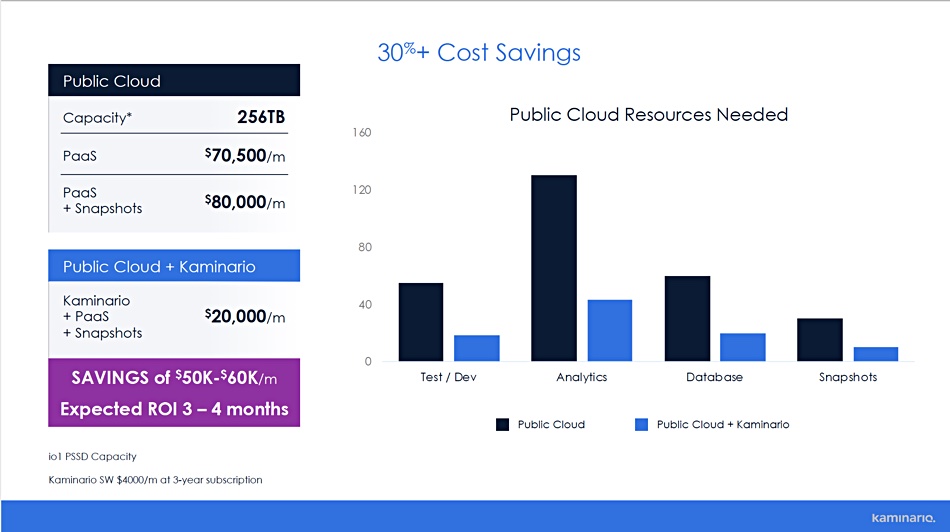Kaminario has adapted its VisionOS storage software for AWS, Azure and Google Cloud Platform – and claims it offers cheaper storage and more services than the cloud vendors’ native offerings.
Kaminario is the first block access array vendor to port its storage array software to all three public clouds. The company said it provides a consistent storage facility covering on-premises all-flash array SANs and their equivalents on AWS, Azure and GCP.
Kaminario’s Flex container orchestration and information services run across these environments as well as its Clarity management and AIOps service.
CEO Dani Golan claimed in a press briefing this week that no other supplier has this level of private and public cloud orchestration. The service enables customers to avoid storage and storage service lock-in to any public cloud supplier, he said.

Kaminario signalled its hybrid multi-cloud intentions in December last year. At the time CTO Eyal David said: ”There needs to be a data plane which delivers a common set of shared services that enable companies to decouple the management and movement of data from the infrastructure it runs on.”
Flex and Clarity form that data plane.
Cost savings
Kaminario said it can provide a 30 per cent or greater cost-saving compared to the public cloud’s own block-access storage services. It suggests customers with 100TB storage or more in the public cloud could benefit from the service.

Derek Swanson, Kaminario field CTO, said VisionOS in the public cloud ‘thin-provisions’ storage – meaning you pay for what you use. In contrast, the cloud providers ‘thick-provision’ storage – i.e. you pay for what you allocate. Also snapshots in the public cloud are full copies whereas Kaminario snapshots are metadata-based and almost zero-space. This saves a huge amount of money compared to native public cloud snapshots, according to Swanson.
Storage performance in the public cloud typically rises with allocated capacity, he said. But Kaminario decouples storage from compute in the public cloud – so you could have high-performance and low-capacity Kaminario storage in the cloud.
The competition
Golan said Kaminario’s hybrid multi-cloud capability means it no longer competes for legacy SAN business with suppliers such as Dell EMC, NetApp or Pure Storage.
According to Swanson, Pure’s Cloud Block Store, with its active:passive controllers, is slower than Kaminario’s VisionOS in the public cloud and lacked data services. Also he pointed out that Pure uses proprietary hardware for its on-premises arrays, and this is not replicated in Cloud Block Store, again making it slower.
NetApp’s Cloud Volumes services were also limited compared to Kaminario’s offerings, Swanson argued. He said NetApp’s Cloud Volumes lacks active:active symmetric controllers, unlike Kaminario, and so is a slower performer than VisionOS.
Kaminario roadmap
Blocks & Files expects Kaminario to add support for tiering data off to public cloud archive services, such as Amazon’s Glacier, with an S3 interface. File-level access protocols might also be supported.
Swanson and Golan said other public clouds would be supported in the future.
Kaminario in brief
Kaminario was founded in 2008 and has taken in $218m in funding. The initial product was the scale-up and scale-out K2 all-flash array. The company separated itself from hardware manufacture in January 2018 with a deal for Tech Data to build certified appliance hardware.
Later that year it embraced Western Digital’s composable systems. The company began moving to a subscription-based business model in mid 2019 and now it is 100 per cent subscription-based and “cashflow-positive”, Golan said.








